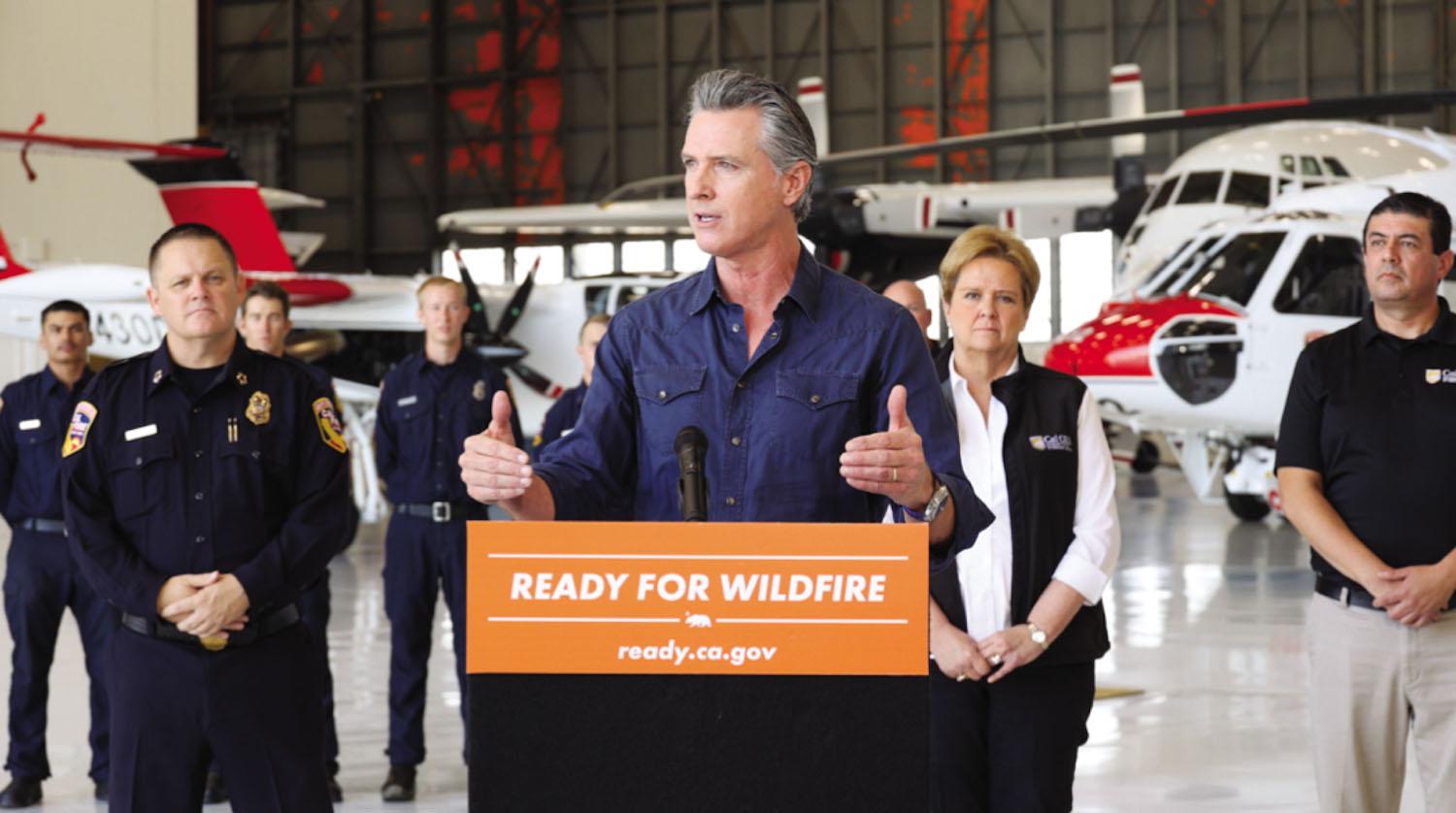
SACRAMENTO – California’s peak wildfire season is here, and it’s significantly more active than the last five years.
So far this year there have been more than 3,500 wildfires across California, with 207,415 acres burned and 128 structures damaged or destroyed. That’s compared to just 10,080 acres at this time last year – and the five-year average of 38,593 acres burned.
The state continues to expand its aerial firefighting force, which is the largest in the world. California also continues to leverage new technologies to support its firefighting capabilities.
Governor Gavin Newsom joined state fire and emergency officials in Sacramento at CAL FIRE McClellan Air Tanker Base to provide an update on California’s wildfire response and readiness.
“The last couple years brought welcome relief for California as we saw historically low levels of wildfire. This season is shaping up to be very active, bringing the threat of dangerous wildfire to many parts of our state. California is ready with the world’s largest aerial firefighting fleet and new technology that helps us fight fire smarter – and we’re already seeing our investments pay off,” said Gov. Newsom.
The recently signed 2024 budget agreement maintains $2.6 billion through 2028 to protect Californians from wildfires and improve forest health. This is in addition to $200 million per year for healthy forest and fire prevention programs, including prescribed fire and other fuel reduction projects. The administration is implementing shorter workweeks for state firefighters and aims to bring on more than 2,400 additional firefighters over five years to augment staffing levels.
Californians can visit ready.ca.gov for resources and safety tips on wildfire, heat and other natural disasters.
Below is a recap of the ways California is keeping communities safe from wildfire:
New aircraft, night-flying capabilities, and expanded drone deployment
- Expansion of helitack bases
– Five additional helitack bases are operational, after personnel completed. training, bringing the total to eight bases equipped for night operations.
– Night-flying aircraft have been activated in response to many wildfires this year.
- Contracted aircraft add to CAL FIRE’s permanent fleet of over 60 aircraft
– 20 additional helicopters and 4 airplanes, including five night-flying capable helicopters.
- Drone deployment
– CAL FIRE currently operates 159 unmanned aerial systems, representing a doubling in CAL FIRE’s use of UAS for aerial ignition, support of prescribed burns, and wildfire containment.
- Ongoing transfer and outfitting of seven C-130 aircraft from the federal government.
Harnessing recent innovations
- Fire Integrated Real-Time Intelligence System (FIRIS) to map wildfire information in real-time.
- Tecnosylva Wildfire Projection Tool to predict wildfire spread.
- Partnership with Department of Defense, using satellites to map wildfires.
- LiDAR Investments to make detailed, 3-D maps of more than 30 million acres of topography and vegetation in high-risk areas.
- Wildfire Threat Intelligence Center (WFTIC), serving as California’s integrated hub for wildfire and weather intelligence.
Giving every Californian access to real-time wildfire intelligence
- A new and improved fire.ca.gov website gets information to Californians in real-time.
– CAL FIRE’s redesigned website now provides more essential information, faster– including total emergency response, wildfires, acres burned, fatalities, and structure damage.
– Integration of ALERTCalifornia Cameras for anyone to view, and real-time aircraft tracking.
– Comprehensive incident map of fires over 10 acres, in real-time.
(Gov. Newsom’s Office Release) n






